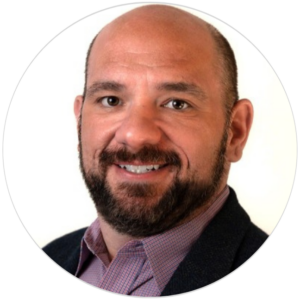How A Centralized Workflow can Better Manage The Healthcare Industry’s Contingent Workforce
8/31/2023
Healthcare organizations and the patients they treat have to rely more and more on employed contract workers who have become critical in managing the growing cost of healthcare — according to data from the Bureau of Labor Statistics, nearly one in 10 US employees had jobs in healthcare last year. More than 50,000 of those contingent workers in the past year worked at least one locum tenens assignment.
Hiring, onboarding, and managing the contingent workforce has been a challenge for human resource managers in the healthcare industry. There’s been a decentralized approach to managing this contingent workforce, which creates limited visibility and inconsistencies in on-the-job experiences for these workers. The decentralized management systems can also hinder healthcare leadership’s ability to assess cost management, uphold compliance, and align with talent strategies.
 Centralized contingent workforce management platforms have emerged as a possible solution. For example, an integrated workforce management platform called “RightSourcing” takes a centralized approach to managing contingent workers, and SVP of Business Development for RightSourcing David Starbuck says this platform gives chief human resource officers a more holistic view of how and where contingent employees work in a healthcare organization.
Centralized contingent workforce management platforms have emerged as a possible solution. For example, an integrated workforce management platform called “RightSourcing” takes a centralized approach to managing contingent workers, and SVP of Business Development for RightSourcing David Starbuck says this platform gives chief human resource officers a more holistic view of how and where contingent employees work in a healthcare organization.
By using a centralized workflow, facilities can keep up with better cost control as healthcare organizations identify areas for savings and process improvements at the executive level. This centralization helps healthcare organizations comply with complex and ever-changing regulatory requirements by embedding strong compliance processes into programs, and this minimizes risk for these organizations.
Before the pandemic, spending on contingent labor accounted for 1% to 2% of operating expenses, according to Starbuck. But he says it peaked at nearly 7% during the pandemic and has since stabilized at 4% to 5%. Centralization could help address unsustainable rise in costs.
New technology helps organizations get real-time data to be proactive in their decision-making with accurate insights into their workforce. Partnering with workforce management software offers a single source of data to help those who procure and manage contingent labor, allowing facility leadership to allocate resources efficiently and identify areas for improvement.
Vendor-neutral Managed Service Providers (MSPs) could facilitate faster role-filling by drawing from diverse talent pools. Additionally, organizations can benchmark their contingent labor usage and have access to compare it to other organizations in the industry, which would only help them optimize talent flow and reduce reliance on external contingent labor.
See more suggestions on optimizing your workforce management systems to better manage your contingent workforce in the full article from Forbes.
La Vida Locum
Addressing Talent Gaps and Physician Shortages With Locum Tenens
8/31/2023
The US has a significant crisis with a growing shortage of physicians, and estimates suggest a potential shortfall of up to 124,000 physicians by 2034. The physician shortage encompasses primary care and specialty care providers, including surgical and medical specialties.
One of the primary factors contributing to this crisis is the aging physician workforce, increased burnout rates, and a decline in the number of residents entering the medical field.
The National Resident Matching Program for 2023 saw a record number of residency applicants, with 48,156 individuals registered. Still, there was an unexpected decline in US MD seniors participating in the Match enrollment.
Among the specialties most in demand are:
- Emergency Medicine – Experts say emergency medicine employment could increase by 3% by 2034, but new resident numbers have recently decreased. Unfilled residency positions increased by 253% (336 people) from 2022 to 2023.
- Anesthesiology – The Association of American Medical Colleges predicts that by 2033, there will be a shortage of 12,500 anesthesiologists.
- Gastroenterology – Gastroenterology is projected to see a shortage of 1,630 physicians by 2025.
Locum tenens providers are increasingly playing a role in addressing these physician shortages by filling staffing gaps and preventing physician burnout. Locum tenens’ adaptability and ability to deliver high-quality care will help support the long-term viability of the healthcare workforce.
Delve deeper into the provider scarcity and see the role of locum tenens providers to help address it in the full article from Medicus Healthcare Solutions.
Strategies To Help Your Facility Succeed As Demographics Shifts in Healthcare
8/30/2023
The healthcare industry is bracing for a significant demographic shift as a wave of physician retirements poses challenges to the sector, like service disruptions, decreased patient care quality, and increased workloads for remaining staff.
Curative Talent offered institutions these four key strategies to prepare for the shift:
1. Succession Planning: Effective succession planning involves identifying potential future leaders within the organization and investing in their growth and development. Planning includes robust physician training programs, mentorship initiatives, and leadership development opportunities.
2. Team-Based Care Models: A team-based care model is a healthcare delivery model where multiple providers address patient care needs through coordinated efforts. By introducing team-based care models, facilities could leverage locums providers like nurse practitioners and physician assistants to improve clinical outcomes and reduce physician burnout by up to 20%. Collaborative care would not only ensure continuity during physician retirements, but it would also foster a more engaging work environment, attracting new healthcare professionals.
3. Embrace Technology: Technology solutions like telemedicine and artificial intelligence can help healthcare institutions cope with reduced physician numbers. Telemedicine extends healthcare services reach, while AI streamlines administrative tasks and supports decision-making.
4. Recruit and Retain: Recruitment strategies should surpass competitive salaries, including performance-based incentives, benefits, and non-monetary aspects like professional development. Leveraging recruiting agencies can expedite the hiring process. Similar efforts should also be integrated into retention strategies for current employees.
Read more in the full article from Curative.
Locum Leaders
Acacium Group Expands US Footprint With Acquisition of Sumo Medical
9/8/2023
A London-based healthcare staffing provider, Acacium Group, recently acquired Sumo Medical Staffing, a specialized locum tenens firm headquartered in Utah.
Sumo Medical Staffing is known for placing physicians and advanced practice providers across various medical specialties in the US, including psychiatry, internal medicine, hospitalists, family medicine, ER/urgent care, and pediatrics.
Acacium’s acquisition and its previous acquisition of Favorite Healthcare Staffing in 2022 significantly expands its presence in the US healthcare staffing market, bolstering its position as a global healthcare delivery partner.
 Acacium Group’s CEO Mike Barnard says Sumo’s commitment to excellence and client-centered values align well with its growth plans to “positively impact society.”
Acacium Group’s CEO Mike Barnard says Sumo’s commitment to excellence and client-centered values align well with its growth plans to “positively impact society.”
This partnership is expected to provide Sumo access to expertise and resources that enhance its services to clients and healthcare professionals while focusing on excellence and quality service. Specific financial details of the acquisition have not been disclosed.
Check out the full press release from SIA for more insights into this acquisition.
Healthcare Staffing Market on Growth Trajectory, Expected To Reach $27B by 2030
9/13/2023
According to a recent report by Coherent Market Insights, the U.S. Healthcare Staffing Market is on a substantial growth trajectory. The report showed in 2022, the industry was valued at $21.33 billion and is expected to reach $26.97 billion by 2030, with a Compound Annual Growth Rate (CAGR) of 3.4% from 2023 to 2030.
Healthcare staffing is crucial for ensuring an adequate workforce in medical facilities. It includes various staffing models, such as locum tenens, permanent hires, and travel nurses, to address workforce shortages and maintain quality patient care.
In a previous report, Staffing Industry Analysts (SIA) estimated that the locum tenens segment grew to $6.1 billion in 2022, an increase of 25% in 12 months. The SIA report anticipated sustained momentum, with an estimated 10% market growth this year and an 8% expansion projected for 2024.
The rise in chronic diseases is a critical driver in healthcare staffing market expansion, with conditions like cancer and heart disease contributing to the need for healthcare staffing. Additionally, the addition of hospitals and healthcare facilities further fuels demand, as seen in the increasing number of private and government hospitals.
Read the full report and get more specific insights into the market segments in the full release from GlobalNewswire.
Hire Power
Excitement Surrounding NALTO’s Annual Fall Fly-In Event
9/19/2023
Amidst record-breaking growth in the temporary physician staffing market, the locum tenens world converges once again next week for the annual Fall Fly-In hosted by the National Association of Locum Tenens Organizations (NALTO) on Sept. 26-27, 2023, in picturesque Park City, Utah.
Each year, the Fall Fly-In serves as an invaluable forum where NALTO members network, share past experiences, and participate in meaningful discussions where they share new ideas to support the industry and grow their agencies.
 This year’s event holds added significance due to the rapid growth of the locum tenens staffing segment. Olivia Reed, NALTO’s Conference Committee Chair and Division Vice President of non-clinical services for Jackson + Coker, emphasized the importance of overcoming challenges and shaping a bright future for locum tenens in this period of expansion.
This year’s event holds added significance due to the rapid growth of the locum tenens staffing segment. Olivia Reed, NALTO’s Conference Committee Chair and Division Vice President of non-clinical services for Jackson + Coker, emphasized the importance of overcoming challenges and shaping a bright future for locum tenens in this period of expansion.

Jarin Dana, president-elect of NALTO and CFO of Fusion Healthcare Staffing, values the event as a platform for networking and gaining industry insights. He said in-person events prompt fresh perspectives and ideas for improving business operations, which is especially crucial with the industry’s recent growth. Dana spoke about the responsibility that comes with change, saying firms needed to collaborate and share resources through NALTO to ensure responsible and sustainable expansion.
You can read the complete article for details and the event agenda.
How Hayes Locums Trains Its Recruiters To Be Successful in Healthcare Staffing
9/6/2023
 The Hayes Locums Training Development Department has earned recognition for its training program for locum tenens recruiters. In this article from Hayes’ Bob Pantalone, he talks about the training program, DRIVE, designed to equip new hires with the skills and knowledge they need to succeed in the healthcare staffing industry.
The Hayes Locums Training Development Department has earned recognition for its training program for locum tenens recruiters. In this article from Hayes’ Bob Pantalone, he talks about the training program, DRIVE, designed to equip new hires with the skills and knowledge they need to succeed in the healthcare staffing industry.
Pantalone broke down three philosophies he used to set Hayes’ training program apart from others:
1. Don’t just focus on recruiting but also relationship-building.
Recognize that providers often choose to work with agencies because of the quality of their consultants. Listen to providers’ needs, respond diligently, and tailor each approach to candidates’ communication styles and career priorities.
2. Learn what you need when you need it.
Pantalone says to focus on customizing training to each hire’s needs and provides coaching that aligns with an employee’s job tasks.
3. Mentorship is a critical component of training.
Structured mentorship through desk-level coaching by experienced trainers allows new employees to gain valuable insights and build confidence. Additionally, it’s essential to encourage new hires to collaborate with their future teams during their training period.
Read the full article and unpack more about Hayes Locums’ DRIVE program here.
NALTO Voices Support for Health Care Provider Shortage Minimization Act
8/30/2023
The National Association of Locum Tenens Organizations (NALTO) announced its support for introducing the Health Care Provider Shortage Minimization Act introduced by Reps. Earl L. “Buddy” Carter (R-GA) and Neal Dunn (R-FL).
The bill’s primary focus is codifying locum tenens providers as independent contractors, enabling them to offer their services nationwide. Approximately 85% of healthcare facilities, including hospitals and medical groups, rely on locum tenens physicians, underscoring their importance to the healthcare industry.
The locum tenens industry annually facilitates more than 20 million patient visits nationwide. This legislation will ensure doctors and advanced practice practitioners can continue offering essential medical services where they are most needed in the country.
NALTO emphasized the bill’s significance in improving access to healthcare providers, particularly in hard-to-reach rural communities. By acknowledging locum tenens professionals’ critical role, the legislation strengthens the ability of these providers to offer on-the-spot care in various healthcare settings.
See the details on the legislative proposal and its potential to address healthcare provider shortages in underserved areas in the full press release from NALTO.
Making the Rounds
New Harvard Study Shows PCPS Who Affiliate with Large Health Systems Drive Up Patient Costs
9/5/2023
A recent study from the Harvard T.H. Chan School of Public Health showed that primary care physicians (PCPs) who affiliate with large health systems drive up spending on patient care.
The findings from the JAMA Health Forum challenged the hospital industry’s claims that consolidation in healthcare leads to cost-saving efficiencies. The study showed that PCPs drive spending through increased referrals to specialists, emergency department visits, and hospitalizations.
Data pooled from over 4 million patients in Massachusetts compared those whose PCPs established vertical relationships with large health systems in 2015 or 2017 with patients whose doctors did not have such affiliations. Patients with doctors in standing relationships experienced a 23% increase in specialist visits, a 14% rise in emergency department visits, and a $357 increase in total medical expenditures per patient-year compared to the control group. Hospitalizations were also 22% higher for patients with doctors in these relationships.
While the study acknowledges the potential benefits of consolidation, it raised concerns that it may lead to higher-cost care without improvements in quality.
For more details on this study and its implications for healthcare providers, read the complete article from AXIOS.
Second Opinion
Physician Assistants Burnout: New Study Shows 8% Intend to Leave Profession Over Next Year
8/12/2023
A recent study by the National Commission on Certification of Physician Assistants found that 30% of certified physician assistants reported at least one symptom of burnout, and almost 8% said they intended to leave the profession. The study surveyed over 111,000 physician assistants working in clinical positions in 2021.
Several critical factors identified in the study pointed to reasons for burnout among physician assistants. Workload emerged as a primary predictor, with those working longer hours facing a significantly higher risk of burnout. Additionally, healthcare professionals in surgery, dermatology, OB-GYN, occupational medicine, and pediatrics reported lower burnout levels than their counterparts in primary care.
Geographical location also played a role in these results. The study showed healthcare providers working in New England, Mountain, or Pacific Census divisions were more likely to experience burnout.
Read the full article from Becker’s Hospital Review for more on the study’s implications for the healthcare industry.
NAHQ Resource Transforms How Facilities Analyze Quality and Safety Investment
8/12/2023
A resource introduced in 2022 is transforming how hospitals and health systems assess their investments in quality and safety. The National Association for Healthcare Quality (NAHQ) launched this resource to give healthcare organizations a comprehensive view of their quality and safety expenditures and enable benchmarking against peers.
Historically, comparing such investments has been challenging due to variations in program structures across healthcare institutions. However, NAHQ’s tool offers an “apples-to-apples comparison” by allowing organizations to benchmark components of their safety and quality programs.
 The resource involves a survey that helps organizations determine their relative investments in quality and safety. It enables hospitals to gauge their quality and safety spending per adjusted discharge and employee, among other metrics. Cleveland Clinic’s Executive Director of Clinical Transformation, Tony Warmuth, played a pivotal role in developing this tool, which gained traction with at least 39 systems and 150 hospitals participating as of May 2023.
The resource involves a survey that helps organizations determine their relative investments in quality and safety. It enables hospitals to gauge their quality and safety spending per adjusted discharge and employee, among other metrics. Cleveland Clinic’s Executive Director of Clinical Transformation, Tony Warmuth, played a pivotal role in developing this tool, which gained traction with at least 39 systems and 150 hospitals participating as of May 2023.
While applications of the tool vary, most organizations are using it primarily to gain insights into their quality and safety investments, with peer-to-peer comparisons being a secondary benefit.
See more about this tool in the article from Becker’s Hospital Review.









